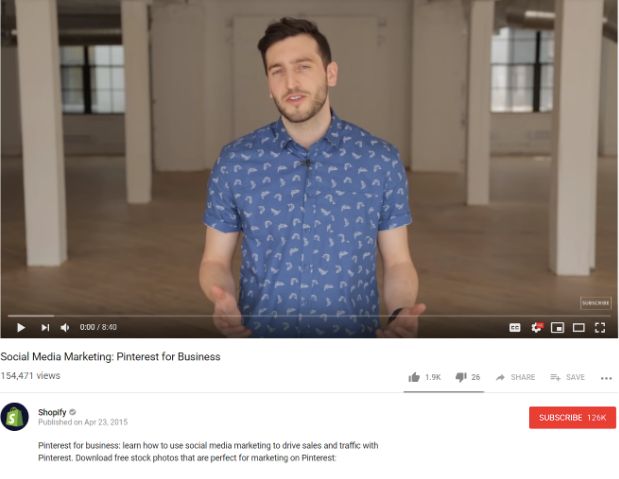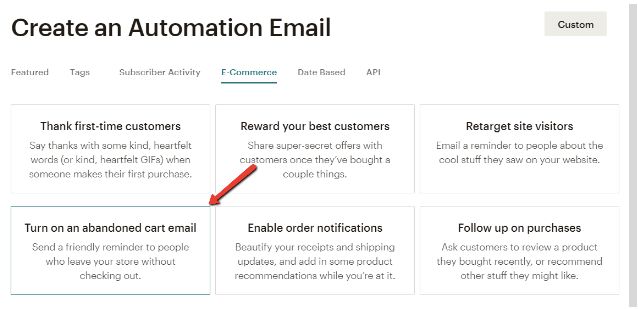Selling online is a lot harder than you think.
If you're planning to create a successful e-commerce business, there are a few steps you need to start with. I don’t know what exactly encouraged you to enter this business, but if it’s a paid online course that sells the idea of how “easy” it is to succeed in e-commerce, then you may have been duped.
Getting traffic to a website alone is something that requires an experienced marketer to pull off. What makes you think pulling in visitors with purchase intent and providing them a smooth sales experience would be a walk in the park?
To improve your online sales performance, there are many growth strategies you can apply to your business. Truth be told, becoming a proficient e-commerce entrepreneur takes more than one blog post to accomplish. But in this post, I’ll show you online sales strategies that will help you achieve sustainable gains to get the ball rolling.
Let’s dive in.
If you're planning to create a successful e-commerce business, there are a few steps you need to start with. I don’t know what exactly encouraged you to enter this business, but if it’s a paid online course that sells the idea of how “easy” it is to succeed in e-commerce, then you may have been duped.
Getting traffic to a website alone is something that requires an experienced marketer to pull off. What makes you think pulling in visitors with purchase intent and providing them a smooth sales experience would be a walk in the park?
To improve your online sales performance, there are many growth strategies you can apply to your business. Truth be told, becoming a proficient e-commerce entrepreneur takes more than one blog post to accomplish. But in this post, I’ll show you online sales strategies that will help you achieve sustainable gains to get the ball rolling.
Let’s dive in.
#1 Build a YouTube Channel
Always remember that no online sale can be ever made if the consumer doesn’t trust the brand.
That’s the main reason why it’s tough to start a new e-commerce brand from scratch. If customers have hundreds of better-known alternatives out there, why would they risk their hard-earned money on a brand they’ve never heard about?
To prove that your brand is worth the money, you must first work on your authority through rigorous content marketing. The typical routes include publishing informative blog posts and curating content for social media.
Creating a YouTube channel and discussing relevant topics in video form is definitely a step up from these tactics.
Apart from purchasing a high-quality camera and video editing software, the costs of setting up a YouTube channel should be significantly lower than a full-on content marketing campaign with SEO on the side. However, you still need to do content research and have well-written scripts ready to make sure your video content garners views.
One type of video you can create is a “how-to” tutorial. Preferably, you should talk about your own products in these videos, but you can also tackle any relevant topic in your niche.
For example, Shopify — an e-commerce platform — released a video on how to use Pinterest for social media marketing.
That’s the main reason why it’s tough to start a new e-commerce brand from scratch. If customers have hundreds of better-known alternatives out there, why would they risk their hard-earned money on a brand they’ve never heard about?
To prove that your brand is worth the money, you must first work on your authority through rigorous content marketing. The typical routes include publishing informative blog posts and curating content for social media.
Creating a YouTube channel and discussing relevant topics in video form is definitely a step up from these tactics.
Apart from purchasing a high-quality camera and video editing software, the costs of setting up a YouTube channel should be significantly lower than a full-on content marketing campaign with SEO on the side. However, you still need to do content research and have well-written scripts ready to make sure your video content garners views.
One type of video you can create is a “how-to” tutorial. Preferably, you should talk about your own products in these videos, but you can also tackle any relevant topic in your niche.
For example, Shopify — an e-commerce platform — released a video on how to use Pinterest for social media marketing.

#2 Automate Abandoned Cart and Cross-Selling Emails
Email marketing is another platform laden with opportunities for you to close more sales.
Not only will it provide you with a direct line to your customers, most modern email marketing platforms like MailChimp, ActiveCampaign, Brevo or GetResponse are also armed with automation features that enable you to customize the sales experience.
Finding what to automate is one of those (good) problems every successful e-commerce business has. One example is the use of abandoned cart emails, which are automatically sent to customers if they leave during the checkout process. And, abandoned cart emails are just the tip of the iceberg when it comes to start with data-driven email marketing.
Keep in mind that there are many trivial reasons why customers are unable to complete their purchase on the first try — from lost internet connectivity to the desire to look for products from competitors. An abandoned cart email is a great way to remind them of the products they’re interested in once they’re finally ready to take the next step.
You can also set up follow-up emails that contain cross-selling offers, such as related products and add-ons, to squeeze more value from your recent customers.
While you’re at it, make sure your email signature contains links to useful resources. This could be a button to your YouTube channel, your privacy policy, or even a download link to your official mobile app.
Besides abandoned cart and cross-selling emails, there are many other growth hacks you can use to improve your email marketing strategy and make more sales.
Not only will it provide you with a direct line to your customers, most modern email marketing platforms like MailChimp, ActiveCampaign, Brevo or GetResponse are also armed with automation features that enable you to customize the sales experience.
Finding what to automate is one of those (good) problems every successful e-commerce business has. One example is the use of abandoned cart emails, which are automatically sent to customers if they leave during the checkout process. And, abandoned cart emails are just the tip of the iceberg when it comes to start with data-driven email marketing.
Keep in mind that there are many trivial reasons why customers are unable to complete their purchase on the first try — from lost internet connectivity to the desire to look for products from competitors. An abandoned cart email is a great way to remind them of the products they’re interested in once they’re finally ready to take the next step.
You can also set up follow-up emails that contain cross-selling offers, such as related products and add-ons, to squeeze more value from your recent customers.
While you’re at it, make sure your email signature contains links to useful resources. This could be a button to your YouTube channel, your privacy policy, or even a download link to your official mobile app.
Besides abandoned cart and cross-selling emails, there are many other growth hacks you can use to improve your email marketing strategy and make more sales.

#3 Leverage User-Generated Content (UGC)
Another way to utilize email automation is to send review requests to your recent customers.
A customer review is one of the many forms of user-generated content or UGC. As the name suggests, this is anything that a customer or user uploads online — usually through social media channels.
According to the Local Consumer Review Survey published by BrightLocal, 91 percent of customers between 18 and 34 trust online reviews — they might as well be product recommendations of people they personally know.
That makes customer reviews among the most effective selling tools for e-commerce businesses.
In addition to automating review requests, you can also encourage customers to leave reviews by implementing on-page features. Shopify Product Reviews, for example, is a free app that allows customers to write reviews right on your product pages.
Don’t worry — you have complete control over which reviews get displayed on your site. This will help you avoid comments from “trolls” who never actually purchased your product or are simply promoting a link to another site.
A customer review is one of the many forms of user-generated content or UGC. As the name suggests, this is anything that a customer or user uploads online — usually through social media channels.
According to the Local Consumer Review Survey published by BrightLocal, 91 percent of customers between 18 and 34 trust online reviews — they might as well be product recommendations of people they personally know.
That makes customer reviews among the most effective selling tools for e-commerce businesses.
In addition to automating review requests, you can also encourage customers to leave reviews by implementing on-page features. Shopify Product Reviews, for example, is a free app that allows customers to write reviews right on your product pages.
Don’t worry — you have complete control over which reviews get displayed on your site. This will help you avoid comments from “trolls” who never actually purchased your product or are simply promoting a link to another site.
#4 Use Social Media Promotions
Apart from customer reviews, UGC also includes your customers’ social media posts that contain any reference to your brand or products.
If you already have an established social media presence, you should be able to find a couple of UGC you can promote to your audience every once in a while. You may also accelerate the production of UGC by launching social media promotions, such as Instagram hashtag contests that encourage customers to post about your brand in exchange for a chance to win something.
Plenty of small-medium e-commerce brands already use hashtag contests that let them leverage UGC. Here’s a simple example from independent record label Color Red Music.
If you already have an established social media presence, you should be able to find a couple of UGC you can promote to your audience every once in a while. You may also accelerate the production of UGC by launching social media promotions, such as Instagram hashtag contests that encourage customers to post about your brand in exchange for a chance to win something.
Plenty of small-medium e-commerce brands already use hashtag contests that let them leverage UGC. Here’s a simple example from independent record label Color Red Music.

Another way to use social media to get more sales is to find warm prospects via social media listening.
With a tool like TweetReach, you can monitor the entire social media sphere for mentions of your brands in one fell swoop. It works by letting you specify a certain hashtag, account handle, or any keyword relevant to your brand before pulling up the latest relevant tweets.
Of course, TweetReach will also show you the user accounts responsible for them.
With a tool like TweetReach, you can monitor the entire social media sphere for mentions of your brands in one fell swoop. It works by letting you specify a certain hashtag, account handle, or any keyword relevant to your brand before pulling up the latest relevant tweets.
Of course, TweetReach will also show you the user accounts responsible for them.

Why do you need to find these users?
For one, it’s a direct way of connecting with prospective leads who may be interested in your brand. They may have posted a question regarding your latest product features, what payment options you accept, or whether you have an outlet in their location.
By answering these questions yourself via Twitter/X, you position yourself as an approachable and steadfast brand — ready to assist your customers in need.
There is also the off chance that a dirty competitor may be spreading misinformation about your brand. WIth a social media listening tool, you can address any false claims and gain a little exposure at the same time.
For one, it’s a direct way of connecting with prospective leads who may be interested in your brand. They may have posted a question regarding your latest product features, what payment options you accept, or whether you have an outlet in their location.
By answering these questions yourself via Twitter/X, you position yourself as an approachable and steadfast brand — ready to assist your customers in need.
There is also the off chance that a dirty competitor may be spreading misinformation about your brand. WIth a social media listening tool, you can address any false claims and gain a little exposure at the same time.
#5 Expose Your Brand on Q&A Websites
The key to successful online content promotion is to master the art of finding the right audience.
That’s where most of the complexities in content marketing lie. A successful keyword research strategy, for example, must factor in the intent of users whenever they use certain long-tail search phrases.
Fortunately, content marketing doesn’t always have to be that complicated.
As you can see, there are many tips and tricks you can use to increase your product sales but there's one that is often neglected: forums and Q&A sites. Q&A websites like Quora, for instance, lets you promote your content and products to prospective customers who need them. All you need to do is enter a phrase that can be relevant to your business and look for questions that users are asking on the platform.
For example, if you sell mechanical keyboards on your online store, entering “why use mechanical keyboards” would yield the following results.
Just remember, you’re not supposed to blatantly promote your product. You need to genuinely try to answer their question via a narrative where your product can be naturally weaved in.
That’s where most of the complexities in content marketing lie. A successful keyword research strategy, for example, must factor in the intent of users whenever they use certain long-tail search phrases.
Fortunately, content marketing doesn’t always have to be that complicated.
As you can see, there are many tips and tricks you can use to increase your product sales but there's one that is often neglected: forums and Q&A sites. Q&A websites like Quora, for instance, lets you promote your content and products to prospective customers who need them. All you need to do is enter a phrase that can be relevant to your business and look for questions that users are asking on the platform.
For example, if you sell mechanical keyboards on your online store, entering “why use mechanical keyboards” would yield the following results.
Just remember, you’re not supposed to blatantly promote your product. You need to genuinely try to answer their question via a narrative where your product can be naturally weaved in.

#6 Target Buyer Keywords in SEO
Using Ecommerce-Centric Keywords is one of those quick e-commerce tips to help your store grow that you can easily implement. Speaking of understanding user intent, you need to follow the same principle when engineering your SEO campaign. This time, you really need to perform proper keyword research to pull in the right kind of audience from search engines. This will allow you to write better product descriptions for SEO, improve your existing and future blog posts, SEO-optimize the other pages of your website in order to focus on purchasing-intent keywords.
If you’ve been reading up on digital marketing and sales strategies, chances are you already encountered the term “SEO” and learned how important it is.
When done right, SEO can provide your website recurring traffic for months. But in order to monetize that traffic, you need to target keywords backed by purchase intent. By doing so, you will have the opportunity to create listings that convert into sales
A tool like Ubersuggest will help you get started in the right direction. Just enter a seed keyword relevant to your term and wait for it to generate long-tail keyword variations.
With the right SEO strategy, you will improve your eCommerce conversions. How do you pluck out keywords with purchase intent from this list of suggestions? Simple — just create a filter that scrapes off keywords that contain commercial terms, like “sale,” “buy,” or “order.”
To help you rank for these keywords, the key is to mention them at least once in important on-page elements, such as:
● Page Title
● Content Headline
● Content Main Body
● Headers and subheaders
● URL slug
● Image names and alt tags
● Inbound links
This was for what we can call 'traditional SEO'. You also need to have an SEO strategy for voice search. Indeed, more and more people use digital assistants like Alexa so having a voice SEO strategy will be helpful to increase your traffic and sales.
If you’ve been reading up on digital marketing and sales strategies, chances are you already encountered the term “SEO” and learned how important it is.
When done right, SEO can provide your website recurring traffic for months. But in order to monetize that traffic, you need to target keywords backed by purchase intent. By doing so, you will have the opportunity to create listings that convert into sales
A tool like Ubersuggest will help you get started in the right direction. Just enter a seed keyword relevant to your term and wait for it to generate long-tail keyword variations.
With the right SEO strategy, you will improve your eCommerce conversions. How do you pluck out keywords with purchase intent from this list of suggestions? Simple — just create a filter that scrapes off keywords that contain commercial terms, like “sale,” “buy,” or “order.”
To help you rank for these keywords, the key is to mention them at least once in important on-page elements, such as:
● Page Title
● Content Headline
● Content Main Body
● Headers and subheaders
● URL slug
● Image names and alt tags
● Inbound links
This was for what we can call 'traditional SEO'. You also need to have an SEO strategy for voice search. Indeed, more and more people use digital assistants like Alexa so having a voice SEO strategy will be helpful to increase your traffic and sales.
#7 Present Seals from Cybersecurity and Payment Gateway Services
One of the reasons why prospective customers abandon an e-commerce website is because they’re concerned about payment security.
This is completely understandable, especially if they haven’t heard of your brand before. That’s why you need to offer them reassurance in the form of trust seals, which may come from your cybersecurity software or your payment service provider.
Naturally, the type of trust seal you can showcase depends on the services you use to run your e-commerce store. SSL certificates, on the other hand, are something you almost always find in websites where users may have to provide sensitive information, such as credit card numbers, email addresses, and so on.
When active, an SSL certificate shows a “secure” icon next to the website’s address on their browser.
This is completely understandable, especially if they haven’t heard of your brand before. That’s why you need to offer them reassurance in the form of trust seals, which may come from your cybersecurity software or your payment service provider.
Naturally, the type of trust seal you can showcase depends on the services you use to run your e-commerce store. SSL certificates, on the other hand, are something you almost always find in websites where users may have to provide sensitive information, such as credit card numbers, email addresses, and so on.
When active, an SSL certificate shows a “secure” icon next to the website’s address on their browser.
#8 Allow Customers to Create Product Wish Lists
It’s understandable for online shoppers to have second thoughts before they click that “buy” button.
For one, they may not have enough cash in hand and are just merely looking around. They may also be waiting for a sale to get a discount and make the most out of their funds.
As the e-commerce store owner, you need to be prepared for these instances.
A good strategy is to let them create their own wish list, which they can return to whenever they’re ready. It’s a pretty widespread practice among large e-commerce websites like Amazon.
You can also use product wish lists to your advantage by creating one for products you want to sell and automatically import them once you’ve verified their profitability. Modern dropshipping tools like Oberlo give you this option, which is incredibly helpful if you still have to do tons of research before you start putting products up for sale.
For one, they may not have enough cash in hand and are just merely looking around. They may also be waiting for a sale to get a discount and make the most out of their funds.
As the e-commerce store owner, you need to be prepared for these instances.
A good strategy is to let them create their own wish list, which they can return to whenever they’re ready. It’s a pretty widespread practice among large e-commerce websites like Amazon.
You can also use product wish lists to your advantage by creating one for products you want to sell and automatically import them once you’ve verified their profitability. Modern dropshipping tools like Oberlo give you this option, which is incredibly helpful if you still have to do tons of research before you start putting products up for sale.
Your turn to use those 8 online sales strategies and get your product(s) off the virtual shelves!
There you go — seven repeatable strategies that will help generate online sales for your e-commerce business. Don't stop there. Why? Because there are many strategies out there to increase conversions of your eCommerce store.Of course, there’s more to these strategies than meets the eye. Don’t be afraid to mix things up and utilize each tactic in unique campaigns that reflect your brand voice.
Hashtag contests, for example, can be as wacky as your or edgy as your brand. The same can be said for your YouTube channel, which can be used as a platform for you to introduce the people behind your e-commerce business. Good luck!
Growth Hackers is probably one of the best small business branding agencies helping startups, e-commerce stores and established brands with these online sales strategies as well as many others. Do you want to get traffic, leads and sales? Contact GrowthHackers and ask us about our digital marketing and growth hacking services. You're looking for growth and we're going to give it to you!





1 Comment
There is a huge competition in the world of Online Marketing and its quite a fuzz getting your business noticed in this global world. Your strategies should be strong enough to face all the challenges and should make authentic adjustments in order to get boost up your business, products or services in this Global Village. Thank you.